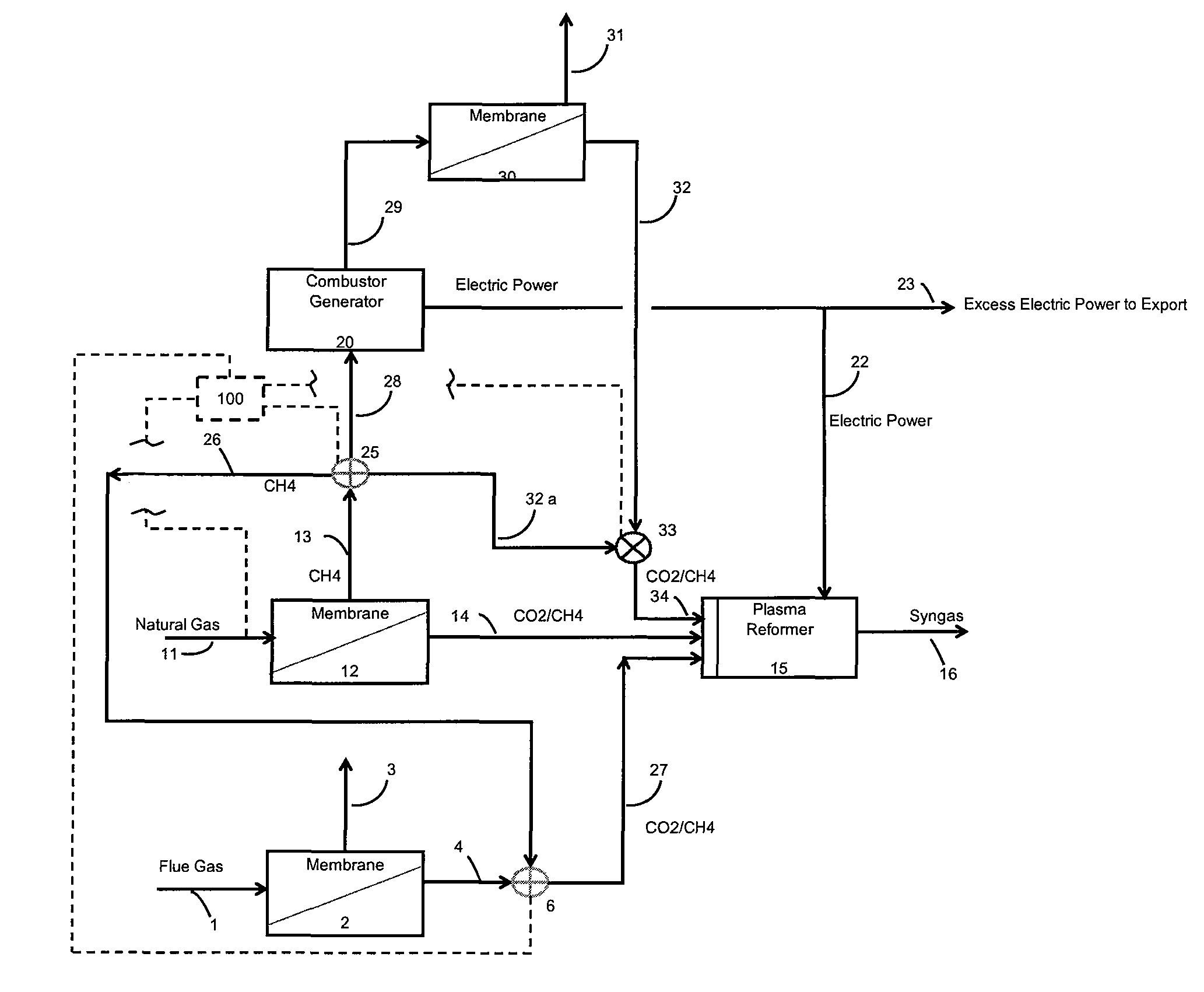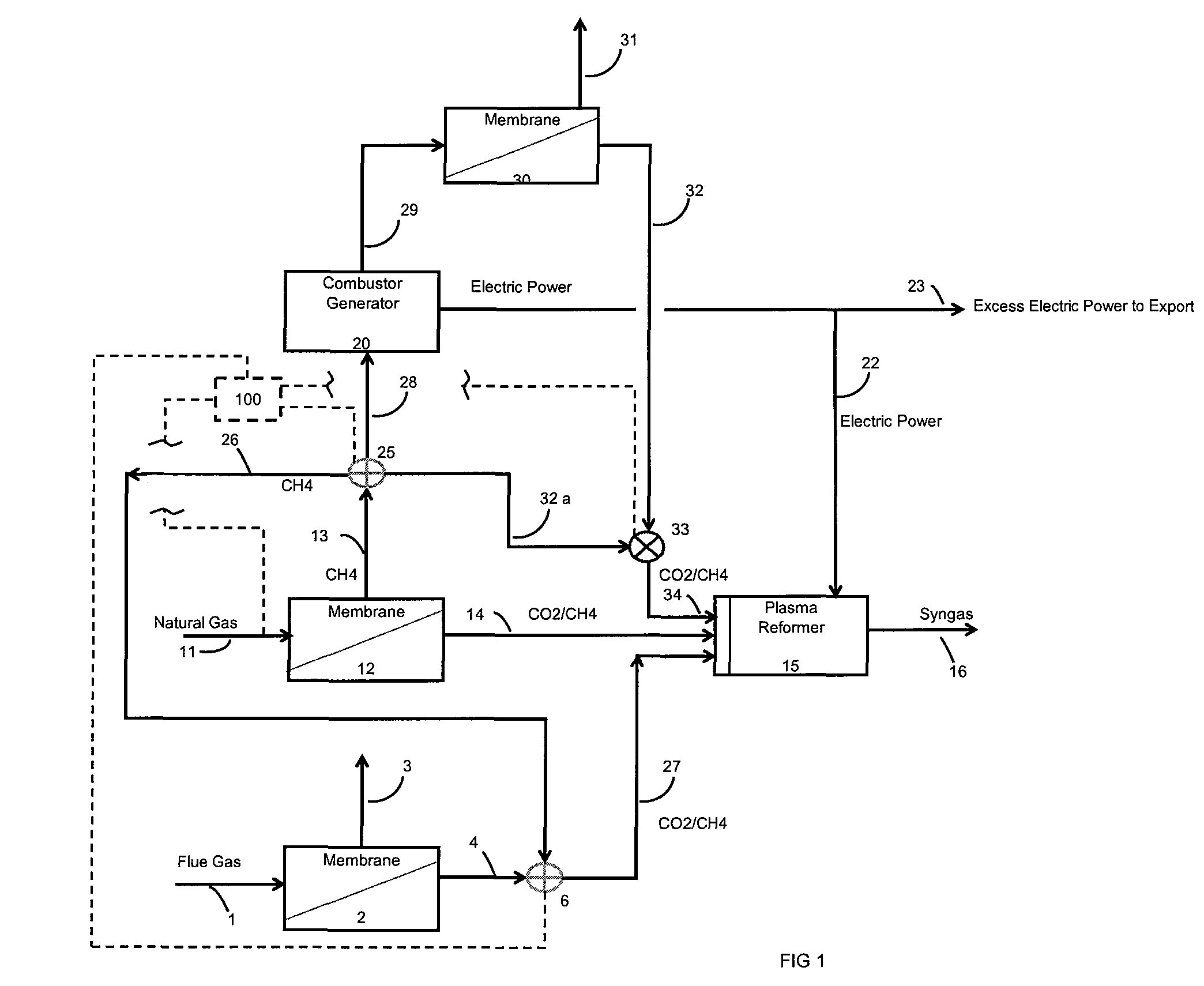Syngas production through the use of membrane technologies
a technology of membrane technology and syngas, applied in the direction of membranes, oxygen-containing compound preparation, separation processes, etc., can solve the problems of negating the overall objective of energy efficiency, not addressing the enormous inventory, and not addressing the current momentum of generating new emissions
- Summary
- Abstract
- Description
- Claims
- Application Information
AI Technical Summary
Benefits of technology
Problems solved by technology
Method used
Image
Examples
example
[0051]An installation is operated according to the flowsheet depicted in FIG. 3 to process a natural gas source 11 containing about 10 vol % carbon dioxide and about 90 vol % methane. The natural gas is treated using the membrane separation devices and a microwave plasma reactor to produce Syngas, to produce a variable amount of pipeline quality gas for export from the methane rich product stream 13, and to produce excess electrical power for export over and above that needed to operate the overall installation. A combustor-generator 20 is used to convert some of the methane into carbon dioxide for use in the plasma reformer 15 while, at the same time, also producing the electrical power required to operate the plasma reformer. A portion of the methane rich stream 32a is fed directly to the blender / regulator 33 to match the amount of CO2 being supplied from the second membrane system 30 which is producing a predominantly CO2 stream 32 from the exhaust gas stream from the combustor-g...
PUM
| Property | Measurement | Unit |
|---|---|---|
| thickness | aaaaa | aaaaa |
| thickness | aaaaa | aaaaa |
| mole ratio | aaaaa | aaaaa |
Abstract
Description
Claims
Application Information
 Login to View More
Login to View More - R&D
- Intellectual Property
- Life Sciences
- Materials
- Tech Scout
- Unparalleled Data Quality
- Higher Quality Content
- 60% Fewer Hallucinations
Browse by: Latest US Patents, China's latest patents, Technical Efficacy Thesaurus, Application Domain, Technology Topic, Popular Technical Reports.
© 2025 PatSnap. All rights reserved.Legal|Privacy policy|Modern Slavery Act Transparency Statement|Sitemap|About US| Contact US: help@patsnap.com



